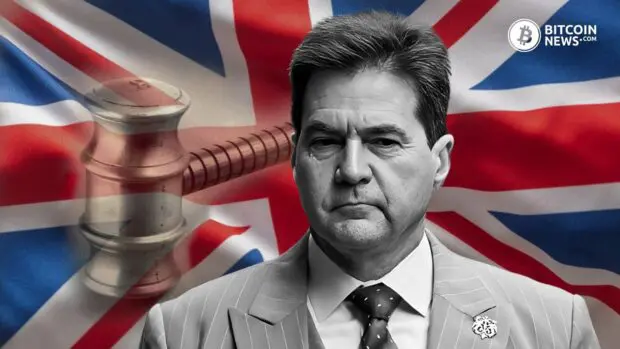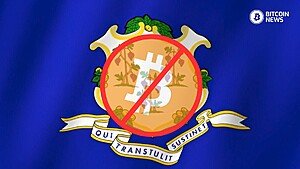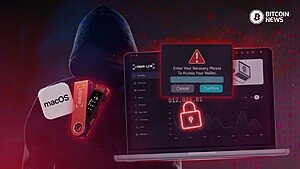In a high-stakes legal showdown, Craig Steven Wright (CSW), the controversial figure who asserts he is the creator of Bitcoin, faced intense scrutiny in the London High Court. The case, brought forward by the Cryptocurrency Open Patent Alliance (COPA), challenges Craig Wright’s claim to be Satoshi Nakamoto, the pseudonymous inventor of Bitcoin.
Attorneys from Bird & Bird and Macfarlanes represented COPA and bitcoin developers, challenging Craig Wright’s Shoosmiths team. COPA’s endorsement by Twitter’s Jack Dorsey underscores their robust legal backing.
Second Day of Trial
Judge James Mellor started the second day of trial by expressing that the ongoing case is not a typical one, particularly considering the numerous alleged forged documents involved. The judge stated that in a normal trial, he would have rejected additional documents from CSW due to their tardiness.
However, an exception is made to allow CSW a chance to counter the forgery allegations. COPA can review these new documents, and if they require more time, it may be granted. The decision stems from the gravity of the fraud accusations against CSW. The judge noted that it’s improbable that more documents will be accepted unless there are highly extraordinary circumstances.
Allegations of Forgery and Manipulation
COPA’s legal team wasted no time in questioning Wright’s authenticity, alleging forgery and manipulation of crucial documents. The alliance claimed that Wright had forged evidence to support his assertion of being Satoshi Nakamoto.
Wright had tried to justify how he supposedly came up with the name “Satoshi Nakamoto”. A video from 2019 was brought up in the courtroom, in which Wright holds up a document to the camera. This document, in particular, that read “Nakamoto is the Japanese Adam Smith,” came under heavy scrutiny.
COPA pointed out discrepancies in the document’s date stamp, suggesting possible alterations. Wright admitted differences but insisted the document’s authenticity, saying it’s been in his possession long, origin forgotten.

A part of the courtroom conversation were as follows:
COPA: Do you accept that the numerals for the numbers “08” are slightly smaller than the numerals “20”?
CSW: I can.
COPA: Is it right that you maintain this is an authentic document?
CSW: I have had it in my drawer for a long time, I don’t know where it comes from.
COPA: Is this Tweet where you say the document authentic, you?
CSW: I do not recall, many people control my Twitter. I do agree the document is authentic.
COPA asked if Wright forged the document and is just making excuses on why font sizes don’t match. Wright denied COPA’s expert findings, alleging they aimed to discredit him. He argued if he had forged the document, it would’ve ended “perfect”, and that his forgery wouldn’t contain amateurish mistakes.
Wright stated:
“If I had forged that document, then it would be perfect.”
Throughout the trial, Wright vehemently denied any wrongdoing. He dismissed allegations of forgery, arguing that the documents in question were authentic and had been in his possession for a significant period. Despite visual discrepancies highlighted by COPA, Wright maintained the integrity of the documents, attributing any inconsistencies to printing errors or technical issues.
Expert Testimony and Contradictions
COPA has presented new forensic evidence that decisively disproves the authenticity of key documents Craig Wright relies on to assert his identity as the founder of Bitcoin. Interestingly, both the expert hired by COPA and the one hired by Wright reached the same conclusion regarding the inauthenticity of the documents in question.
Wright challenged the qualifications of his own expert witness, Dr. Simon Placks, questioning his expertise in information security. This move raised eyebrows in the courtroom, as Wright attempted to discredit expert opinions that contradicted his narrative.
He stated:
“I didn’t choose Dr Placks, I didn’t want Dr Placks […] Dr Placks is a psychologist. He has a degree in psychology. He has no qualifications in information security.”
Wright was asked: “the expert called by your side is not a suitably qualified expert to give evidence on what he covers in his reports?”, to which Wright answered: “If you’re asking me that directly, yes.”
For example, COPA focused on a document’s flaws, like misaligned characters. Wright admitted rare edits, blaming others for tarnishing his image.
Cross-Examination Drama
CSW published a paper backdated to before 2009. COPA accuses CSW of plagiarizing this paper from another author’s work, which was published after 2012. COPA alleges that the original paper in question had four references to sources after 2009, which CSW removed in publication. However, according to COPA, these references were still present in the text of CSW’s paper.
During questioning, COPA asked CSW about his evidence, suggesting that he claimed to possess pre-publication versions of not only the Research Gate article (his own paper) but also four out of the five other papers referenced in it, all of which were published after 2009.
CSW responded by asserting that, as someone who studied at a university specializing in epidemiology, researchers often share their work, and he used papers from others. He justified having pre-publication versions by explaining that when people ask him for papers, he reciprocates by sharing his own. This claim surprised many, as using other researchers’ results before their own publication is not a normal practice.
COPA: Your evidence to the court, is that you have a pre-publication version of not just the Research Gate article itself, but 4 of the 5 other papers referenced in it, which were published after 2009?
CSW: I studied at a university that specializes in epidemiology. So, yes, researchers share. I used other people’s papers. If people ask me for papers, I send them mine too.
As the trial progressed, tensions ran high during cross-examinations. Wright’s demeanor fluctuated between defiance and defensiveness as he faced probing questions from COPA’s legal team. The courtroom atmosphere, described as “oppressive” due to extreme heat, added to the intensity of the proceedings.
Wright rejected copying evidence and showed emotion when questioned, claiming to be “better with code than words.”
Unraveling Craig Wright’s Narrative
COPA’s relentless pursuit of the truth revealed inconsistencies in Wright’s claims. From alleged document forgeries to discrepancies in video evidence, the alliance meticulously dissected Wright’s narrative, painting a picture of doubt and inconsistency. Despite Wright’s attempts to explain away discrepancies, COPA’s evidence raised serious questions about the authenticity of his claims.
The Implications of the Trial
The outcome of this landmark trial carries significant implications for the Bitcoin community and the future of the digital currency. If COPA succeeds in disproving Wright’s claim to being Satoshi Nakamoto, it could pave the way for greater transparency and accountability within the space. Conversely, a ruling in Wright’s favor could reinforce his position as Bitcoin’s elusive creator, shaping the trajectory of the digital currency.
This series of trials are expected to last 6 more days.










